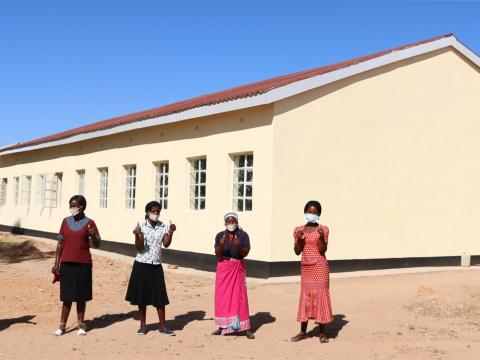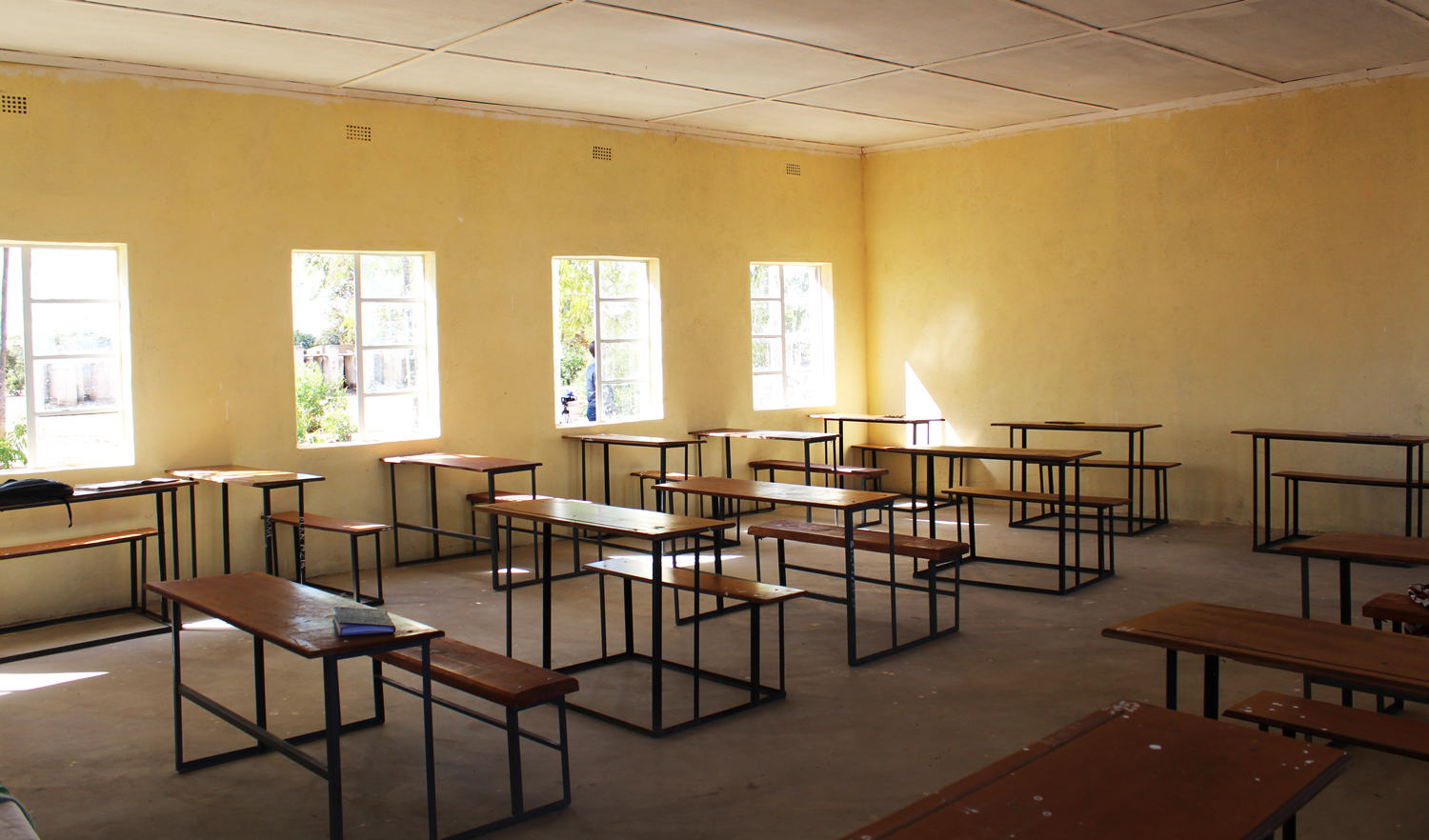Rebuilding after Idai: Parents come to the rescue of primary school children in Manjokota Village

“It’s hard to learn outside, which is what we were now doing. The wind makes too much noise, you can’t hear the teacher or each other anymore. Learning is fun in a nice classroom like the new ones we have now!” says Life, a Grade 7 student at Manjokota Primary School.
The March 2019 Cyclone Idai left a trail of destruction. The long-lived storm caused damage to buildings in Buhera, including at Manjokota Primary School. Classroom blocks for children in grades 1, 2 and 3 were damaged. One of the blocks cracked through the centre of the structure, along the roof as well as at the corners of the building rendering the classrooms in the block unsafe for learning, especially for young children. The school had just completed a block of toilets for the teachers after a long time of saving and planning, these too were destroyed along with the logs supporting their transformer, disrupting the schools electric power supply.
To provide immediate relief, World Vision supplied the school with tents as temporary classrooms for learning.
“The tent is obviously better than learning outside, and we were grateful, but we were really excited when they started building new classrooms. I, for one, am glad my juniors will be learning in safe classrooms,” saya Mary, a Grade 7 student from the school.

The community, collaborating with the Ministry of Education and World Vision's Zimbabwe office (and supported by the Disaster Emergency Committee), came together to build new classrooms for the school. To encourage local ownership of the project, the community would provide the bricks and the partners would take care of all the necessary remaining resources, including all the furnishings for the classrooms. Spurred on by this promise of help, the Manjokota community immediately mobilized themselves to meet a set target of 100,000 bricks to complete the blocks. They split themselves into ten groups, each group tasked with making 10,000 bricks.
Muchanyara Teyendepi, a woman from the community speaks of the experience: “We were now in competition. We wanted to see which group would make the most bricks in the shortest time. And mind you, they had to be good bricks! Every member of the adult community had a role to play, and they fulfilled it. The men dug up the soil, mixed the sand, and the women fetched water. Whilst the men were making the bricks, women were moving them to the next point of production. And when it was time to harden and bake the bricks, the women fetched the firewood,”.
Rural communities are often praised for their cooperative nature, and with good reason. The Manjokota community is testament to this, working hard together to see the school rehabilitated within the stipulated timeline. The chiefs and community leaders were equally involved, mobilising the community, organising tasks, supervising the work and ensuring that community members stayed motivated. When the builders came, the community members assisted the builders in all the ways they could, mostly providing manual labour.
The school development committee chair Benson Manjokota passionately expressed gratitude for the assistance the community received to build new classrooms for their school.
“When they told us, we would be receiving building material, we were doubtful, honestly. Would that really happen for Manjokota?” says Benson, revealing their initial scepticism. He takes a moment, surveying one of the newly built classrooms proudly.
He adds: “We finally believed that we were going to receive assistance when we saw the vehicles approaching, that’s when we knew! We had our bricks ready, we had shown our commitment. Once they came we set a target for 28 February to complete the entire rehabilitation, and we met it. We weren’t expecting the help. It would have taken us four years to raise money for the 400 bags of cement, World Vision really assisted us."
After the 2019 tropical cyclone disaster, this activity will see children who had been left hopeless in a brand-new classroom and continuing to learn, thanks to the coming together of various partners in the reconstruction and building of the school classroom blocks. This resonates with World Vision’s strategic imperative of collaborating for greater impact in building brighter futures for vulnerable children!